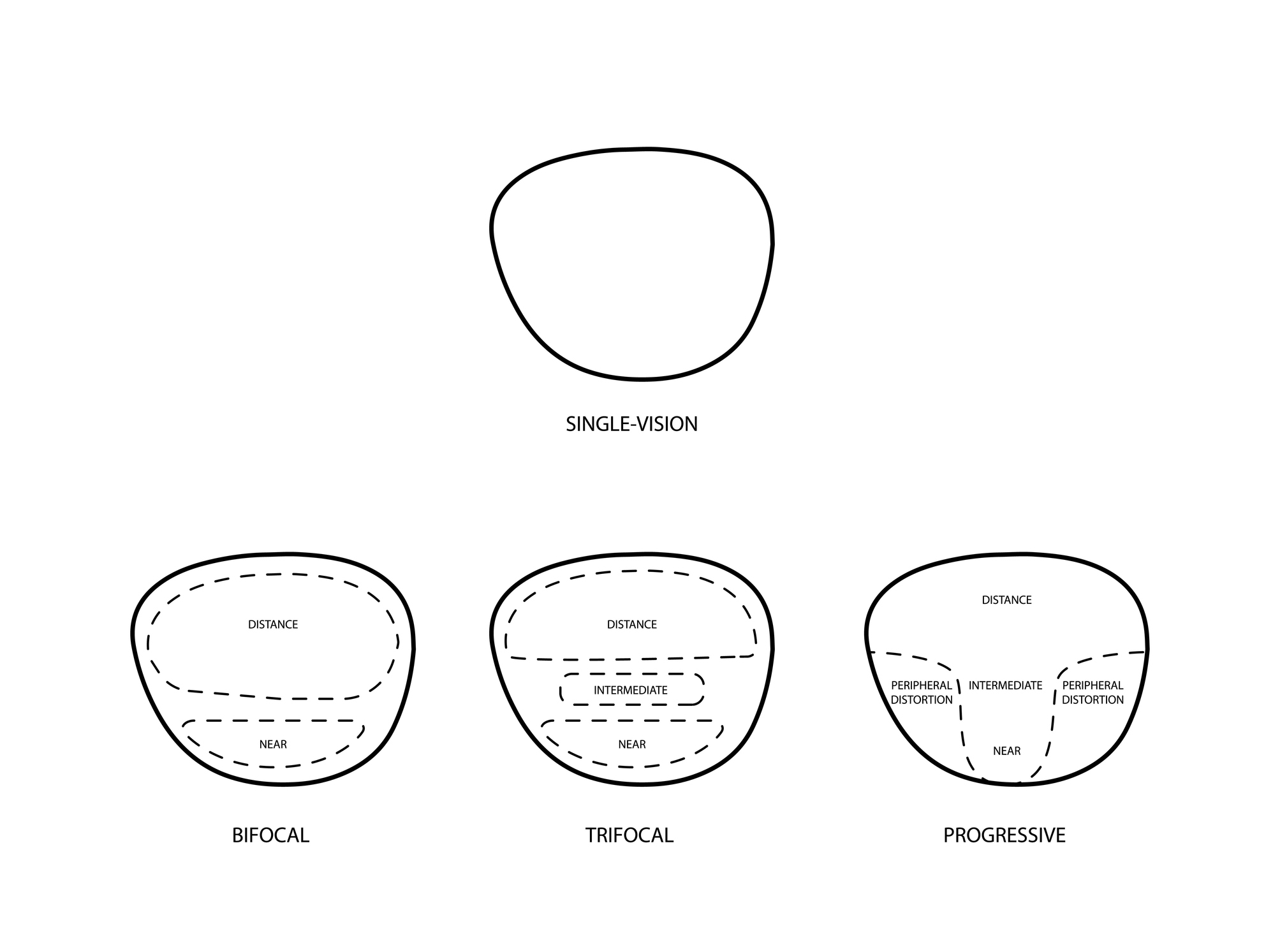Last Updated: April 5, 2024

A single vision lens compared to multifocal lenses
What are multifocal lenses?
Multifocal lenses have multiple prescriptions in one lens to assist in seeing at different distances. The main types of multifocal lenses are:
- bifocals: prescribed for near and far vision,
- trifocals: prescribed for vision at near, arms-length, and far distances,
- progressives: multifocal with a seamless transition between distances, and
- special occupational lenses.
Are multifocal lenses just for middle-aged and older adults?
No. Although multifocal lenses are commonly prescribed for adults with presbyopia, they are also prescribed for children, teens, and young adults who have difficulties seeing at different distances or have specific vision issues requiring multifocal lenses.
Can I get rid of the telltale line in the middle of my bifocal or trifocal lenses?
Yes, you can get rid of the lines in your bifocal or trifocal lenses by switching to progressive lenses. These lenses seamlessly transition between prescriptions. Many people prefer progressive lenses for cosmetic reasons and for their versatility.
Why do multifocal lenses cost more than regular single-vision lenses?
Multifocal lenses, especially progressive lenses, cost more than single-vision lenses because they are more complicated to manufacture. New advancements in lens technology, such as digital or high-definition lenses that correct for aberrations and provide a wider field of view, also contribute to the higher cost.
I currently wear contact lenses. Will I have to give them up?
Multifocal contact lenses are available. Other alternatives include the technique of monovision (treating one eye for close vision and the other eye for distant vision) and using reading glasses over top of contact lenses. Speak with your optometrist to discuss your options.
Suggestions for adapting to multifocal lenses
- Don’t look at your feet when walking.
- Hold reading material at approximately 16 inches (or 40 centimetres) and lower your eyes so that you are reading through the lower part of your lenses.
- Fold your newspaper in half or quarters and move it, rather than your head when reading.
- Wear your multifocal continuously for the first week or two, until your eyes are accustomed to them, even though you may not need them for all tasks.
- It is much easier to adapt to new glasses if you put them on first thing in the morning and do not switch between them and your old pair.
- Make sure that eyeglass frames are always adjusted for your face so that the lenses are properly positioned.
Video: What are progressive lenses | Dr. Meagan Saccucci